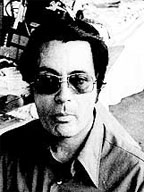Reverend Jim Jones, the cult leader who organised the mass murder-suicide of 900 of his followers at Jonestown, was importing the cyanide that would be used up to two years before the tragedy, a special CNN report has said.
According to CNN Presents: “Escape from Jonestown,” a special report by Soledad O’Brien, sources in Guyana have said that as early as 1976, the Jonestown camp began obtaining about a quarter to a half-pound of the deadly poison each month, long before most of Jones’ followers moved to the settlement. On November 18, 1978, 909 members of Jones’ Peoples Temple died at the settlement, with all but two succumbing to the ingestion of cyanide. A third of the dead were children. A US congressman, Leo Ryan, who was investigating the settlement, was killed along with several others at a nearby airstrip just prior.
In the repot, to be aired tonight, O’Brien tells of the last hours of Jonestown and the few who survived out of desperation and daring.
CNN said it was told that Jones obtained a jeweller’s license to buy cyanide. The chemical can be used to clean gold but there was no jeweller’s operation in Jonestown.
 Six months before Ryan arrived in Guyana on a one-man investigative mission, the settlement’s doctor wrote in a memo to Jones: “Cyanide is one of the most rapidly acting poisons. … I would like to give about two grams to a large pig to see how effective our batch is.”
Six months before Ryan arrived in Guyana on a one-man investigative mission, the settlement’s doctor wrote in a memo to Jones: “Cyanide is one of the most rapidly acting poisons. … I would like to give about two grams to a large pig to see how effective our batch is.”
The purchases are “strong evidence that the Rev Jim Jones had been plotting the death of his followers long before that fateful day,” O’Brien reports.
Jones had told the members of his Peoples Temple church that the Guyana Defence Force (GDF) would have invaded their settlement after the murders of the congressman and others. He then demanded that parents kill their children then take their own lives, rather than face the authorities.
Of the 909 who died, 303 were children—from teens to toddlers. Many were killed by Jones’ loyalists, who used syringes to squirt cyanide down their throats.
Ryan, the only US representative assassinated in office, was shot at a nearby airstrip as he tried to leave with 15 church members who told him Jones was holding people captive in the remote jungle encampment. “That was literally a jungle prison,” said Gerald Parks, whose wife, Patricia, was shot to death in the airport attack.
Four other members of his family survived, including two young daughters who were lost in the jungle for three days after running away from the airstrip to hide from the killers.
The report labels Jones as “a phony faith healer” who moved his Indiana church to northern California in the mid-‘60s in search of a safe place to survive the possibility of nuclear warfare. In the mid-70s, when a magazine raised questions about church beatings and financial abuses, Jones moved his flock to Guyana, to a jungle settlement he called his ‘beautiful promised land’.
“It was a slave camp run by a madman,” said Leslie Wilson, a young mother then only 21, who began walking away from Jonestown early on the day that ended in the suicides and murder. She and 10 others trudged almost 30 miles through the jungle to another town. Wilson carried her 3-year-old son on her back. “It was a freedom walk,” she said. “It was a walk to freedom.”
Tim Carter, a Jones aide, stayed in the camp almost to the end and saw his wife and his one-year-old son die before he was sent away on an errand.
Authorities made him return two days later to help identify bodies. Carter saw Jones lying with a bullet hole in the side of his head. “I remember thinking the son-of-a-bitch didn’t even die the way everybody else died,” Carter said.









